Trail Running Shoes vs Road Running Shoes
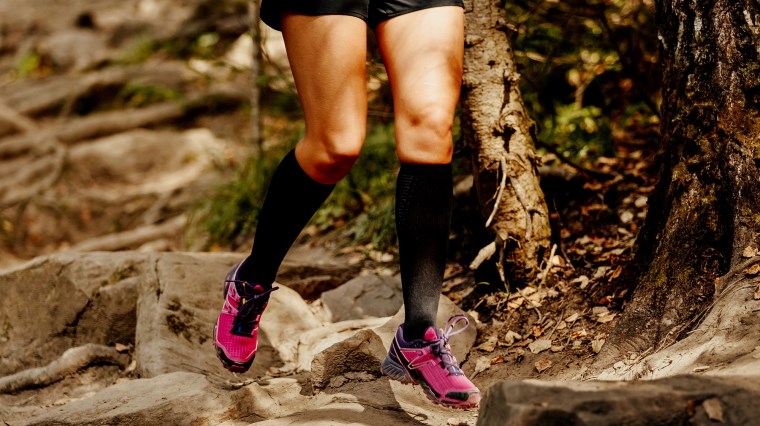
“Road shoes essentially are designed to go in a straight line as fast as possible. They’re not designed to cope with all the changes of directions and obstacles that you need to run over or run through [on the trail].”
Taking your fitness off-road? Trail running strengthens your muscles and improves your mood, but it's important to wear the right shoes for the right job.
Shoe expert Reece Taylor explains the benefits of adding a dedicated trail running shoe to your running rotation and identifies the features that make them your secret weapon for conquering uneven and unpredictable terrain.
We’re going to compare the anatomy of trail running shoes to road running shoes regarding the engineering of the upper, midsole and outsole and highlight why they’re best suited to their intended running surface.
Check out Reece’s tips and our summary below.
Upper
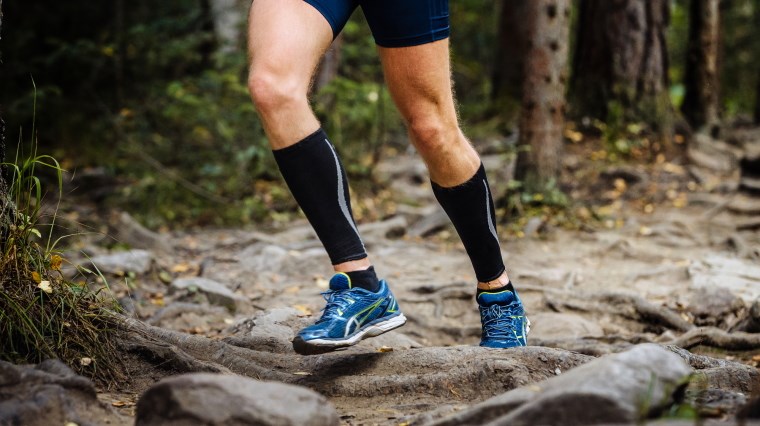
Breathability vs Protection
On the trail you’ll encounter all kinds of debris – from sharp stones to gnarly twigs. To keep nature out of your shoes where you can enjoy it, trail shoe uppers offer a tighter, closer weave compared to road running shoes to form a protective wrap around your foot. They may use welded overlays on the medial and lateral side to reinforce the trail shoes against potential wear.
When engineering a trail running shoe, brands must ensure a balance between offering durable protection and a breathable, adaptable fit. However, many trail running shoes take the waterproof route – hugging your foot in a waterproof membrane like Gore-Tex, which naturally compromises on breathability yet keeps your feet drier in a downpour.
On the other hand, road running shoes – whether used as a daily trainer, for high mileage running, tempo training or race day – prioritise breathability with open mesh uppers that allow cool air to circulate and heat and humidity to escape. This ensures your feet stay in dry, fresh and healthy conditions for longer instead of drowning in sweat – reducing the risk of bacteria or fungal infections like athlete’s foot having a party between your toes.
The engineering of a road shoe upper offers less protection, can be punctured more easily by sticks and jagged objects and may not cope as well in the elements – but on your day-to-day road runs, these factors are unlikely to come into play.
Lightweight and breathable uppers are at home on the predictable nature of the road and improve your comfort as a runner – particularly when you’re training heats up, you’re clocking up high mileage or are working out in warm, summery conditions.
Trail-Specific Features
Protection that may be overkill or add excess weight on the road can be a necessity on the trail. Adventure-ready features on trail shoes ensure a distraction-free run when you go off-road. A lace garage/pocket tucks your laces securely out of the way to reduce trip hazards and prevent you getting tangled up on the run by being caught on sticks or debris.
A gusseted or stitched-in tongue helps ensure a consistently snug fit – preventing the tongue from shifting during direction changes, springing over roots or when navigating around other natural hazards. A toe guard reinforces the toe area to protect against abrasions from sticks and stones, and prevent sharp objects from punching a hole or impaling through this critical zone of the upper.
Midsole
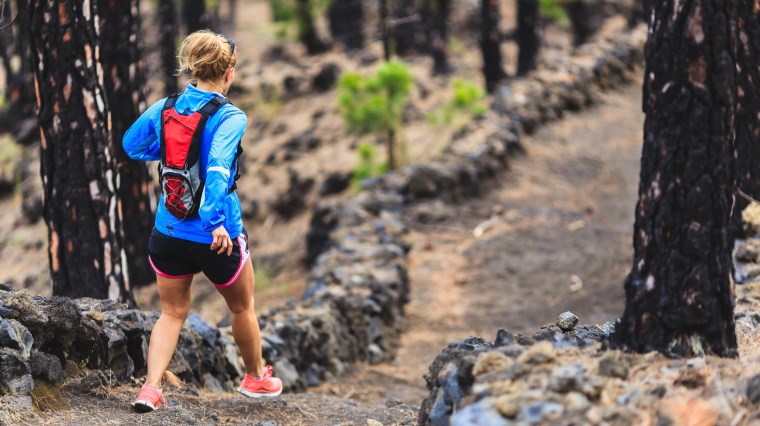
Cushioning vs Feedback
Sandwiched between the upper and outsole, the midsole is the component of your running shoes that’s responsible for delivering cushioning and stability.
Midsoles are potentially softer in road running shoes to provide impact protection against hard urban and city running surfaces, and firmer on trail shoes for improved stability on uneven, natural terrain. However, with the huge variety of running shoes currently on the market, it can be much more complicated than that.
Midsole compounds, heel-to-toe drop and stack height vary widely between shoe brands and specific models. Whether you’re looking to add a trail shoe or a road shoe to your rotation, the question of cushioning (shock absorption) or feedback (improved ground feel) is applicable to both and the decision comes down to personal preference.
A more minimalist midsole allows you to feel every pebble, improving proprioception (awareness of your body in space) to adapt quicker to changing terrain and provide a more close-to-ground sensation. Barefoot shoes like Vivobarefoot with zero cushioning take minimalism to a new level – following the philosophy that less is more and encouraging you to use the tools you were born with – your feet – to their full ability by minimising any interference with sensory feedback.
A plusher midsole on the other hand with a higher stack height provides more protection – both from hazards underfoot and from the repetitive stress running can have on the body. A well-cushioned platform between your feet and the ground ensures you won’t feel every pebble and can potentially ward off muscular fatigue for longer by reducing the shock on your joints including feet, knees and hips.
Trail blazers seeking max cushioning gravitate to trail shoes like the Brooks Caldera 4 and New Balance Fresh Foam More Trail v1 for this reason. Salomon tends to lean towards a proprioceptive feel but also offers a middle ground between minimalist and max cushioned trail shoes with models like the Salomon Sense Ride 3.
Rock Plate vs Exposed Midsole
Many trail running shoes feature a Rock Plate – a plastic or carbon fibre inlay that forms a protective barrier to prevent sharp, natural hazards from puncturing through the trail shoe – not only for the sake of your shoes, but for the sake of your feet. Alternatively, trail shoes may feature a complete outsole from heel-to-toe, with no gaps exposing the midsole underfoot.
As we touched on earlier, a conventional road running shoe can prioritise lightness over protection, seeing as usually there’s no surprises from foreign objects out on the road in comparison to trails which can be littered with debris.
Many road shoes feature exposed midsoles to cut back on the weight – but take them to the trail, and you risk damaging your shoes or enduring potential injury to your feet with foreign objects impaling through these potential ‘threat points’.
Outsole
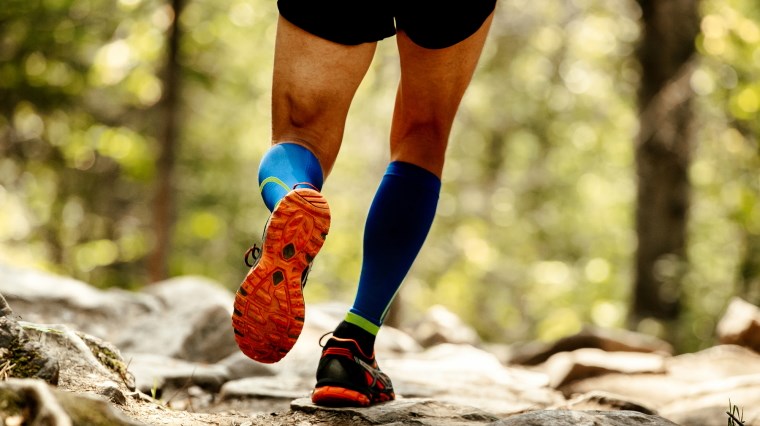
Softer vs Harder-Wearing Rubber
The outsole is the rubber platform underneath the shoe that is in contact with the ground with a role to provide traction, durability and protection.
Trail shoe outsoles are made with a softer composition of rubber to offer more bite on natural surfaces like dusty trails or mountainous landscapes. This off-road traction keeps you stable and sure-footed on changing terrain – translating to more confidence, particularly as you fatigue.
City and urban surfaces like road and pavement are hard, solid and unforgiving. For road shoes to be able to withstand repetitive impacts on the tarmac or asphalt, the outsole compound must be harder-wearing to prevent breaking down prematurely.
This is especially the case when we’re talking about high mileage shoes that spend many hours in action on the road. Road shoe outsoles are typically designed with a combination of softer rubber at the forefoot for a snappy transition on toe-off, and more durable rubber at the rearfoot to reinforce this high-impact zone for heel strikers and increase the lifespan of your running shoes.
Lug Design & Tread Pattern
The lug shape, size and configuration determine how effective a trail shoe is at tackling specific terrain types. Small, tight lugs are versatile on firmer grounds – but on softer or sloshy grounds like mud they tend to cake quickly, inhibiting your grip.
Deeper, spaced out lugs ensure your trail shoes don’t catch and trap mud between the lugs of the outsole. With more prominent lugs and less lugs to ‘hold’ onto, mud tends to shed away quickly once you run out of sloshy terrain. They’re comparable to off-road tyres that have aggressive lugs to churn over loose dirt or to prevent getting bogged in mud.
Directional lug configurations provide traction to cater for downhill and uphill running. This is achieved by a combination of lugs pointing forward and lugs pointing back to help propel your body efficiently uphill or brake downhill.
Road running shoes offer a smoother platform with flex grooves to encourage fast and efficient forward momentum in a relatively straight line. Trail shoes need stickier, rugged traction and off-road lugs to keep you confident dodging roots or flying over tricky terrain like loose rocks.
The Wrap Up
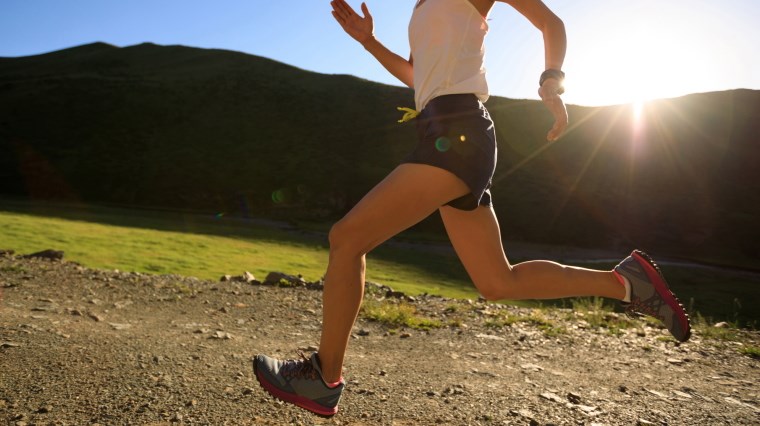
When running off-road, trail shoes are confidence-inspiring – engineered with the durability, protection and traction to tackle challenging terrain. On the other hand, the lightweight and breathable nature of road running shoes ensure they're at home on the hard and predictable surfaces of the concrete jungle.
If you’re taking your fitness to the trail at least once a week, adding a trail shoe to your running shoe rotation is the way to go. This is not only for your protection and safety, but to extend the lifespan of your road shoes by only using them on the surface type they were intended for - reducing the risk of excess wear and tear, abrasions and punctures.
If we look at this in reverse, in most cases it’s recommended that you keep your trail shoes off the road – the softer rubber outsole will quickly become worn down by repetitive impacts on hard urban and city surfaces and when you switch back to trail, the traction will be compromised.
Although it's beneficial to have a dedicated road and trail shoe in you rotation, some trail running shoes like the Salomon Sense Ride 3 offer a hybrid tread pattern with all-terrain traction to switch up your running surface without having to lace up in a new ride.
Subscribe to our YouTube channel so you never miss out on the latest RunTV episodes, shoe reviews and other practicals tips for runners.
Happy running and we'll see you out on the trail.
